THE HINDU – CURRENT NOTE 18 January
G.S-01
 ‘Asians drove rise in world tourism numbers in 2016’
‘Asians drove rise in world tourism numbers in 2016’

- The number of international tourists rose by four per cent worldwide to 1.2 billion in 2016 as Asians travelled more. : WTO
- This is seventh consecutive year of growth since 2009, when global tourism figures declined 4%.
- Reasons: financial crisis, security fears, and an outbreak of swine flu.
- People living in Asia rose eight per cent compared to 2015.
Region-wise:

- Asia-Pacific area proved a popular destination — the second-most visited region after Europe.
- The growth in the number of visitors to Europe had slowed due to security concerns.
- Americas registered a growth of four per cent in visitor numbers.
- Africa recovered from a sharp drop in 2015 due to security fears, recording an eight per cent growth.
- Middle East saw a four per cent drop in the arrival of tourists.
- In 2015, France ranked number one, followed by the U.S. and Spain. But France has been hard hit by extremist attacks in the past two years.
G.S-02
 Britain to leave EU’s single market: May
Britain to leave EU’s single market: May

May’s Views:
- Britain would leave the EU’s single market in order to restrict immigration in a clean break from the bloc, but lawmakers can vote on the final deal.
- Her emphasis on immigration controls — though focused on EU citizens during the speech — was also significant, signalling that the toughening of overall immigration policy is unlikely to end any time soon.
- Britain would seek a trade deal giving “the greatest possible access” to the market on its departure. Further, any divorce deal with the remaining EU members must be approved by votes in both chambers of Parliament.
- She promised to trigger Article 50 of the Lisbon Treaty, by March-end. (Britain has 2 years to negotiate a break-up deal).
- “phased process of implementation” is expected to calm fears of a sudden jolt to the economy on abruptly leaving the EU.
Parliament to vote:
- Parliament would now get a vote on the final deal before it was implemented which could even potentially block the deal.
- A final settlement and trade deal could be simultaneously negotiated within the time-frame after Britain officially declaring the country’s intention to quit, or face leaving with no agreement.
Significant to India:

- India has 800-odd Indian companies with European headquarters in London.
- Indian companies have traditionally viewed Britain as their main gateway to Europe, and in anticipation of a potential hard Brexit, had begun to obtain the necessary licences to operate in the region.
Relations with nations beyond the EU:
- India, along with New Zealand and Australia as countries on which discussions on future trade ties
- K. needs to increase significantly its trade with the fastest growing export markets in the World.
 In Davos, Xi defends globalisation
In Davos, Xi defends globalisation

- China’s President Xi Jinping at the World Economic Forum in Davos insists that globalisation was irreversible despite a populist backlash in the West. In what amounted to a rewriting of the global economic order, led for decades by the U.S.
- He added Globalisation should be “more inclusive, more sustainable” currently existing global institutions are “inadequate” and should be more “representative”.
4-day WEF event:

- Four day event ends as Mr. Trump takes office. Trump has repeatedly accused China of carrying out trade policies that have led to massive loss ofS. factory jobs. He has threatened to slap tariffs of up to 45% on Chinese goods.
- Xi added, It is simply “not possible” to reverse the flow of global capital, technology, goods and people. China was committed to “opening up” and defending globalisation’s gains for emerging economies rebuking Trump’s thinking.
Facts and Reports:
- World Economic Forum study– within advanced economies, median per capita income fell on average 2.4% over the past 5 years, helping to explain why disaffection is so high across the West.
- Oxfam report – eight men own the same wealth as the poorest half of the world’s population scaling the chasm between the richest and poorest.
- Consultancy Edelman– public confidence in institutions including in governments, business, the media and NGOs slumping across the rich world.
 ‘Trump has declined Dalai Lama’s request for a meeting’
‘Trump has declined Dalai Lama’s request for a meeting’
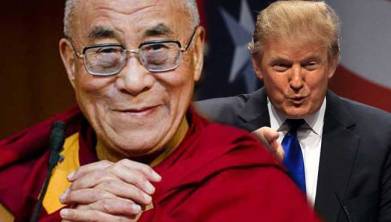
U.S. President-elect had declined the Dalai Lama’s request for a meeting, signalling the new administration’s openness to a policy review on Tibet. Dalai Lama had once expressed his wish to meet Mr. Trump, but this was turned down.
Impact on India:
Any shift in U.S. position on the Dalai Lama is bound to have a downstream impact on India, which hosts the Tibetan leader. Last month, the Chinese Foreign Ministry had expressed its “strong opposition” to the Dalai Lama’s meeting with President Pranab Mukherjee at a Rashtrapati Bhavan function.
Position on Arunachal:
- Trump’s position on the status of Arunachal Pradesh, and arms sales to India, would be of major concern to China.
- Whether President Trump supports India’s claim to Arunachal Pradesh and continues U.S. arms sales to India (America’s largest customer of weapons) is another Chinese worry about the coming year.
- S. Ambassador to India Richard Verma had visited Arunachal Pradesh on October 21 to attend a three-day local festival in Tawang, drawing strong criticism from China.
- India wants the Trump-administration to acknowledge Arunachal Pradesh as part of Indian Territory.
 ‘An Afghan agenda for Trump’
‘An Afghan agenda for Trump’
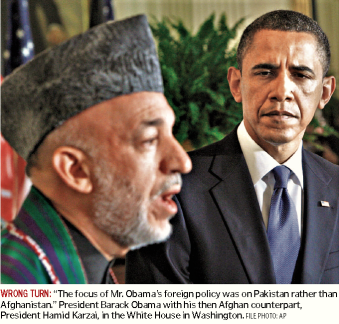
- On 20th Jan: Obama leaves office along with it he leaves behind an unfinished conflict, the longest lasting and least successful U.S. war in history-Afghanistan.
- President of contradiction whose Afghan policy proved markedly disastrous. He wrongly believed that he would win the War on Terror militarily and by appeasing the military establishment in Pakistan.
- The new U.S. President must address Pakistan’s treacherous role in Afghanistan at full tilt.
- It is imperative to limit the impact of the conflict in Afghanistan on the Afghan people, and compel Pakistan to squeeze those who harm Afghanistan and nurture, shelter and finance forces of terror.
Double-dealing on Pakistan:
- Letter of Promises: Obama to Karzai
- concerned about the safe havens in Pakistan and the threat they pose to Americans and Afghans.
- continue to use the various means at our disposal to degrade the safe havens [in Pakistan] and to disrupt attacks into Afghanistan.
- No serious efforts were actually undertaken by the Obama administration “to degrade the safe havens”. 8 Years Obama’s Admin remained passive in taking firm action against Pakistani state support for terrorism.
- Contradicting his words Obama said that Pakistan is a strategic “ally” in the War on Terror, and while already fighting a war in Afghanistan, his administration “cannot open another front against Pakistan”.
India & Border Concern:

- He repeatedly urged his Afghan counterpart to address Pakistan’s “concerns” about the Indian influence in Afghanistan.
- He even suggested that Mr. Karzai find a “resolution of differences” on the Durand Line with Pakistan. He proposed that “any issues concerning the border must come through mutual agreement between the parties concerned”.
- Karzai cleared stances on both key issues: Afghanistan cannot and will never accommodate Pakistan’s desire to control Kabul’s foreign policy, nor can it be expected to recognise the imposed Durand Line.
- The focus of Mr. Obama’s foreign policy was on Pakistan rather than Afghanistan.
Appeasing Pakistan:

- After Killing Osama bin Laden under Obama, Pakistan’s ISI secured “a commitment from the U.S. to give Pakistan ‘a freer hand’ in Afghanistan to terrorise and slaughter Afghans (mainly Hazaras) under a new brand: the Islamic State.
- Out of $33 bn U.S. assistance to Pakistan $21 bn were given under President Obama in the name of fight against terrorism, but Islamabad’s policy of supporting terrorism and radicalism didn’t changed.
Failing Afghanistan:
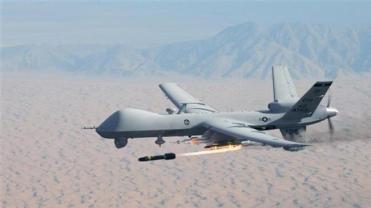
- Obama’s policy, as seen by Afghans, was about putting more boots on the ground, blind bombardments, more drone attacks, heavy reliance on special forces, fruitless military operations in Afghan homes and villages.
- His rhetoric was that the war in Afghanistan is “a war of necessity” and a “war that we (the U.S.) have to win”.
- An intensified U.S. drone campaign, assassinations, covert operations, ineffective night raids, illegal detention of more than 5,000 Afghans in the Bagram prison were not only a clear violation of Afghan sovereignty but of international law.
- Obama administration severely undermined human rights by downplaying the threat of its overall military operations to civilian lives in Afghanistan. The mindless killing of the Afghan civilians — elders, women and children — was the symptom of his weak and failed policy.
- The substantial militarisation of the U.S. Afghan policy and the expansion of war killed any chance of peace in Afghanistan.
Expectations:
- Key objectives of the U.S. foreign policy not expected to change under the new administration.
- President Trump can avoid the errors of the past in Afghanistan. He should boost the security and defence capabilities of the Afghan national armed forces.
- On Afghanistan, Mr. Trump should embrace a vibrant diplomacy and regional cooperation towards Russia, China, India and Iran.
G.S-03
 India now an associate member of CERN
India now an associate member of CERN

- India has officially become an Associate member of CERN with the Indian government completing its internal approval procedures in respect of the agreement it had signed with CERN on November 21, 2016.
- An Agreement was signed in November 2016 to admit India to CERN as an Associate member. But India had to “notify CERN of its final approval for the Agreement to enter into force” and become an Associate member.
As an associate member:
- India will have full access to all data generated at CERN. As there are many experiments in CERN, there will be plenty of information available.
- India can participate in all experiments. Also, whenever any CERN facilities get upgraded and go through maintenance, it will provide opportunities for Indian industries to participate.
- It will also enhance the participation of young scientists and engineers in operation and maintenance of various CERN projects.
 Industry seeks foreign partners for trade pact
Industry seeks foreign partners for trade pact

- India’s top industry bodies are attempting to build a coalition with counterparts in other nations with similar interests to give a fillip to the country’s proposal for a Trade Facilitation in Services (TFS) Agreement at the World Trade Organisation (WTO)-level.
- The proposed TFS pact, among other things, aims to make it easier for professionals and skilled workers to move across borders for short-term work, as well as ensure portability of their social security contributions.
- India is making the case for this pact in line with the Trade Facilitation Agreement (TFA) in goods, signed by WTO in 2014. It aims at expediting movement, release and clearance of goods as well as co-operation on customs compliance issues.
- Pitching for a trade facilitation agreement in services in WTO, India had floated a concept note in September 2016 saying the pact will reduce transaction costs by doing away with unnecessary regulatory and administrative burden on trade in services.
- India had proposed simplification of procedures and clarity in work permits and visas for smooth movement of professionals.
- It said the TFS Agreement will address the key issues that are pertinent to facilitating trade in services, such as transparency, streamlining procedures, and eliminating bottlenecks.
 Finance Ministry suspends Dec. 21 tax circular on indirect transfers
Finance Ministry suspends Dec. 21 tax circular on indirect transfers

- In a move that will provide a respite to foreign portfolio investors (FPIs), venture capital and private equity investors, the central board of direct taxes (CBDT) has decided to put on hold its recent circular on taxation of indirect transfers.
- In December 2016, the tax department issued a clarification on the scope of indirect transfer provisions that sought to even apply these provisions to FPIs. This would have taxed any profits made by funds with underlying assets (including equities) in India.
- This would have subjected FPIs, especially those with India-focused funds, to greater scrutiny by the income-tax (I-T) department and led to double taxation in many cases.
- It was estimated that 181 publicly traded funds whose India exposure is more than half of total assets could be affected by this move. These funds managed $39 billion of assets.
- This had forced many foreign investors to make representations to the finance ministry asking the latter to reconsider the circular.
 Centre mulls easing FDI norm for single brand retail
Centre mulls easing FDI norm for single brand retail

- The govt. is considering allowing 100 % FDI through automatic route in single brand retail with certain conditions.
- Currently, FDI up to 49 % is permitted under the automatic route but beyond that limit, government’s nod is required.
- Foreign investment is allowed subject to certain conditions, which require products to be of a ‘single brand’ only and to be sold under the same brand globally.
- FDI beyond 51 %, it is mandatory to source 30 % of the value of goods purchased from India, preferably MSMEs.
 In the nick of time
In the nick of time

- A compromise has been reached between the Centre and the States on the formula for administrative control over taxpayers under the GST.
- The authority to levy GST on all services entities and manufacturing firms with ₹1.5 crore or more annual turnover centre allowed the states there way.
- The new control-sharing system:
- 90% of all GST assessees with a turnover of up to ₹1.5 crore will come under the watch of the States.
- 10% under that of the Centre, with both getting to assess half of the firms with a turnover over ₹1.5 crore.
- The trickiest issues between the Centre and the States are now resolved and only legislative drafts remain to be approved when the Council meets next on February 18.
- Centre rest its hopes of an April 1, 2017 rollout ‘more realistic’ July 1.
Industry Concerns:
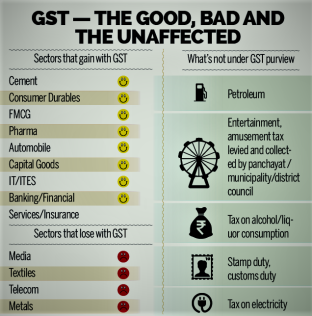
- Firms would need about six months to gear up for the new tax regime once the laws, rules and all the minutiae of implementation, including the rates for different products and services, are known.
- More clarity and finesse are also needed on the harsh penal provisions, including the power to arrest, proposed in the draft GST law (that lists out 21 offences)
- The creation of an anti-profiteering authority that can act against firms that fail to pass on benefits of tax rate cuts to consumers.
- A clear rule-based framework is necessary to ensure that one of the biggest gains envisaged from GST — an exponential change in ease of doing business — isn’t scuttled by fears of a return to inspector raj.
 SC asks govt. to file status report on Ganga rejuvenation
SC asks govt. to file status report on Ganga rejuvenation
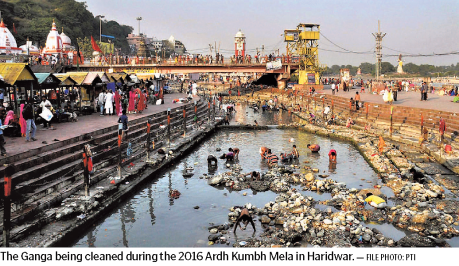
- Supreme Court sought a fresh status report from the Centre on what it was doing to revive the holy river after the government’s self-proclaimed promise to clean up the Ganga river become 2 years old.
- The report was sought on a 32-year-old pending public interest litigation petition filed by environmental lawyer, M.C. Mehta.
- In 2014, the Supreme Court said that its “last hope” rested on the National Green Tribunal (NGT) and referred the task of monitoring industrial units along the Ganga to the NGT.
- The court had even empowered the tribunal to cut off water and power connections if the units are found to be polluting the river. The court had observed that official apathy coupled with “failure at various levels” in both the State and the Central Pollution Control Board had led to the Ganga dying at the hands of “highly” and “grossly” polluting units, which flushed their untreated effluents into the river without any checks.
IITs’ consortium:
- In January 2015, a consortium of IITs was preparing a road map to rejuvenate the river. a proposal is on track to have a total of 80 sewage treatment plants (STPs) which would process, in a day, 368 million litres of water flowing into the river in the five river basin States.
- The Ganga River Basin Management Plan (GRBMP) 2015 drafted by the IIT consortium had pointed to several problems, from rapid urbanisation to over-grazing, which has led to the slow destruction of the river was submitted by Govt. in March, 2015.
 Domestic air passenger traffic grew 23% in 2016
Domestic air passenger traffic grew 23% in 2016

- India’s domestic air passenger traffic grew 23.18% to about 10 crore in 2016 compared with the previous year, data released by the Directorate General of Civil Aviation (DGCA).
- In 2016, India’s air traffic stood at 9.98 crore passengers compared with 8.19 crore in 2015 which had seen a 21% growth.
- In 2016, 63.8% of all passengers flew using low-cost airlines, such as IndiGo, SpiceJet and GoAir, up from 59.7% in 2015.
- Low-cost airline IndiGo continued to dominate in 2016 with a 2.6% increase in its market share to 39.3%.SpiceJet’s passenger share rose to 12.7% from 11.6% a year ago. Vistara carrying 2.5% of the total passengers and AirAsia, 2.4%.
- Full-service airlines Air India, Jet Airways and GoAir declined in 2016.
- India has 35 crore middle-class citizens but the number of tickets sold was only eight crore. The government expects the number of tickets sold to go up to 30 crore by 2022.
- Reason: A dip in aviation turbine fuel prices by 8% on an average in 2016 allowed airlines to offer fares that were lower by about 14%.(Aviation turbine fuel cost contributes about 40% of the total cost of the operations of airlines.)
- According to CAPA report titled Aviation Outlook for 2017-18:
- India’s domestic market is on track to surpass 10 crore passengers in 2016-17 and India will likely overtake Japan this financial year to become the third largest domestic market behind the U.S. and China.
- India will witness the third consecutive year of domestic growth above 20% in 2017-18 and the growth could be as high as 25%.
